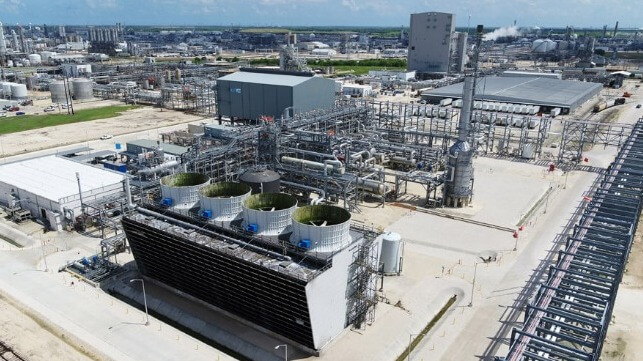BASF and Yara Evaluate U.S. Gulf Coast Low-Carbon Blue Ammonia Project

Chemical company BASF and Yara Clean Ammonia are exploring expanding their current relationship in producing ammonia used in fertilizer to also produce blue ammonia at a world-scale low-carbon production facility with carbon capture in the U.S. Gulf Coast region. The companies are collaborating on a joint study looking into the feasibility of developing and constructing a plant with a total annual capacity of 1.2 to 1.4 million tons to serve the growing global demand for low-carbon ammonia.
“Yara and BASF have successfully collaborated in the past and we are pleased to explore a new clean ammonia project together,” said Magnus Krogh Ankarstrand, President of Yara Clean Ammonia. “In line with Yara Clean Ammonia’s strategy, we are working systematically to develop asset-backed supply to decarbonize agriculture as well as serving new clean ammonia segments such as shipping fuel, power production and ammonia as a hydrogen carrier.”
BASF and Yara are long-standing collaboration partners operating a joint world-scale ammonia plant at BASF’s site in Freeport, Texas used in fertilizer. Founded in 1958, the plant in Freeport was BASF’s first manufacturing site in the U.S. and today consists of 27 plants employing more than 900 people.
The companies highlight that the product characteristics of blue ammonia are identical to conventionally produced ammonia. The product in known as blue ammonia because it is produced using natural gas or other renewables with the CO2 generated in the production process is captured and not released to the atmosphere. Blue ammonia is projected to play a significant role in the transition to alternative, less carbon-intensive products.
The concept for the additional manufacturing facility projects that approximately 95 percent of the carbon dioxide (CO2) generated from the production process would be captured and permanently stored in the ground. This would allow Yara to serve its customers with clean ammonia with a significantly reduced product carbon footprint. Yara is targeting maritime applications among its potential markets for ammonia.
BASF aims to reduce its absolute CO2 emissions by 25 percent by 2030 compared with 2018 and achieve net zero CO2 emissions by 2050. For BASF, the new plant would act as backward integration to serve the company’s demand for low-carbon ammonia and would lower the carbon footprint of its ammonia-based products.
The companies plan to complete the feasibility study on the low-carbon blue ammonia production facility by end of 2023. Several other projects are also exploring the production of ammonia along what U.S. Gulf Coast for the new emerging markets for industrial applications and shipping.
No comments:
Post a Comment